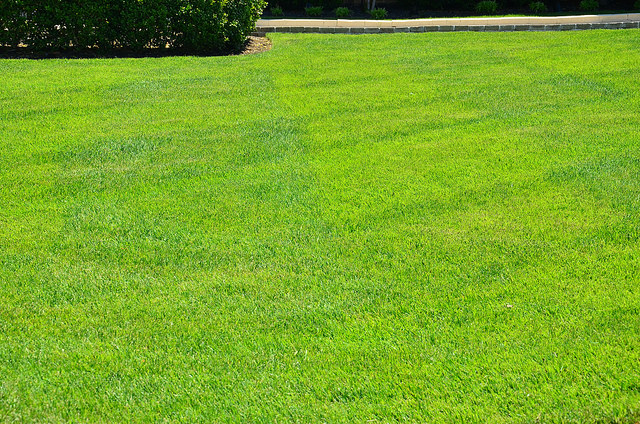
Is a lush, green lawn your springtime dream? Get ready to make that dream a reality. A little prep work in early spring sets the stage for a beautiful yard all summer long.
It’s March. Half the country is buried in snow and Punxsutawney Phil’s shadow says there are still six more weeks of winter. Eventually, when the snow will melts, you can tackle your muddy yard project yourself or with your local landscape professional.
Spring landscaping sets up your lawn for success in the summer. Whether working with a GreenPal service professional or getting your hands dirty, here are 10 tips to help make sure you have the best yard on the block.
Spring cleaning:
Hopefully, you or your service pro tackled the leaves in the fall. If not, grab the right rake for the job and get to work. A deep raking can also help remove any grass that died during winter.Inspect:
Walk your lawn and look for bare spots and brown patches that need attention. Also, take time to inspect your equipment. Will your lawn mower start? Does the blade need sharpening? Is the sprinkler system working properly? Does your lawn have any winter salt damage from de-icers and salt?Reseed
After winter, your lawn might have some bare spots. Grass and weeds compete for space, so it is important to fill the void with new grass to prevent weeds throughout summer.Mow:
Once the weather warms up and average daily temperatures rise above 50 degrees Fahrenheit, grass will start sprouting. New growth will require mowing. Set your mower higher and be sure to not cut your lawn too short. Try not to cut lower than 2½ inches or more than 1/3 of the length when you mow, as this removes too much of the grass leaf. Longer grass blades promote longer roots, absorb more nutrients and prevent weeds from growing.Edge:
Edging your lawn adds a clean appearance that improves the overall look of your lawn. Edging also prevents overgrowth onto sidewalks and flowerbeds as the lawn becomes more active in late spring and early summer.Feed:
Fertilizer is like a multivitamin for your lawn and plants; it helps them grow lush. Use a soil test to figure out the exact type of fertilizer to use. Soil tests are available at your local home store. They range in price from $10-$20 and are simple to use.Weed:
Prevent the spread of weeds by applying a pre-emergent herbicide, a preventative weed killer. If crabgrass is problematic in your area, consult with your local professional on exactly when crabgrass prevention is necessary; timing is crucial with its application.Prune:
Trim shrubs and plants for optimal growth. Spring’s blooming shrubs need pruning after they bloom, not before.Water:
Watering schedules vary by region and plant type and a home in Dallas requires a different schedule than a home in the Pacific Northwest. Mother Nature and, in some cases, local restrictions play a role in watering frequency. Regardless, you never want to over water. Use a water gauge and the best sprinkler for the lawn to be precise with your watering schedule.Aerate:
Consider aerating your lawn in the spring in cases of over compaction from traffic, thin turf from dying grass or excessive thatch from a poor watering/feeding schedule. Aerating relieves these issues and promotes healthy lawns.
Frequently Asked Questions
When to start spring lawn care?
Begin spring lawn care when the soil has thawed and is no longer soggy, typically when temperatures consistently stay above 50°F (10°C).
What is the first thing you put on your lawn in the spring?
The first thing to put on your lawn in the spring includes:
- Pre-emergent herbicide: Apply this early to prevent weed seeds from germinating.
- Light fertilizer: Use a balanced fertilizer if soil tests indicate nutrient deficiencies.
- Lime: Adjust soil pH by applying lime if needed, based on soil test results.
- Debris cleanup: Clear away leaves, twigs, and other debris to prevent mold and disease.
What is the best spring lawn fertilizer?
A balanced slow-release nitrogen fertilizer, typically with a N-P-K ratio close to 20-5-10, is effective for promoting healthy spring growth.
How do I make my grass greener in the spring?
To make your grass greener in the spring, follow these steps:
- Aerate the Lawn: This allows air, water, and nutrients to penetrate the roots, helping to create a healthier, greener lawn.
- Overseed: Fill in thin or bare spots with new grass seed to increase the density and uniformity of your lawn.
- Fertilize: Apply a slow-release nitrogen fertilizer to feed the grass and promote vigorous growth.
- Water consistently: Provide 1 inch of water per week, including rainfall.
- Proper Mowing: Keep your mower blades sharp and cut grass at the species' recommended height to encourage healthy, green growth.
- Check pH and amend soil: Ensure soil pH is appropriate for your grass type; adjust using lime or sulfur if needed.
How does fertilization benefit my lawn in spring?
Fertilization acts like a multivitamin, helping your lawn and plants grow lush and vibrant. Conducting a soil test determines the specific type of fertilizer needed, ensuring optimal growth and health of your lawn.
TL;DR
Prepare your lawn for spring with these 10 essential tips. Start by cleaning up any remaining leaves and inspecting your lawn for issues. Reseed to fill bare spots, mow carefully, and edge for a clean look. Properly fertilize based on soil test results and prevent weeds with pre-emergent herbicides. Prune your plants after they bloom, water wisely, and consider aerating if needed. These practices will ensure a lush and beautiful lawn this spring.
If you have specific questions about your lawn, be sure to get in touch with a local lawn care company..
Author Bio:
James Daugherty writes for Zillow, the leading real estate and rental marketplace dedicated to empowering consumers with data, inspiration and knowledge.



 Share
Share









